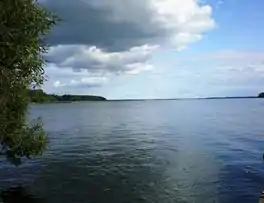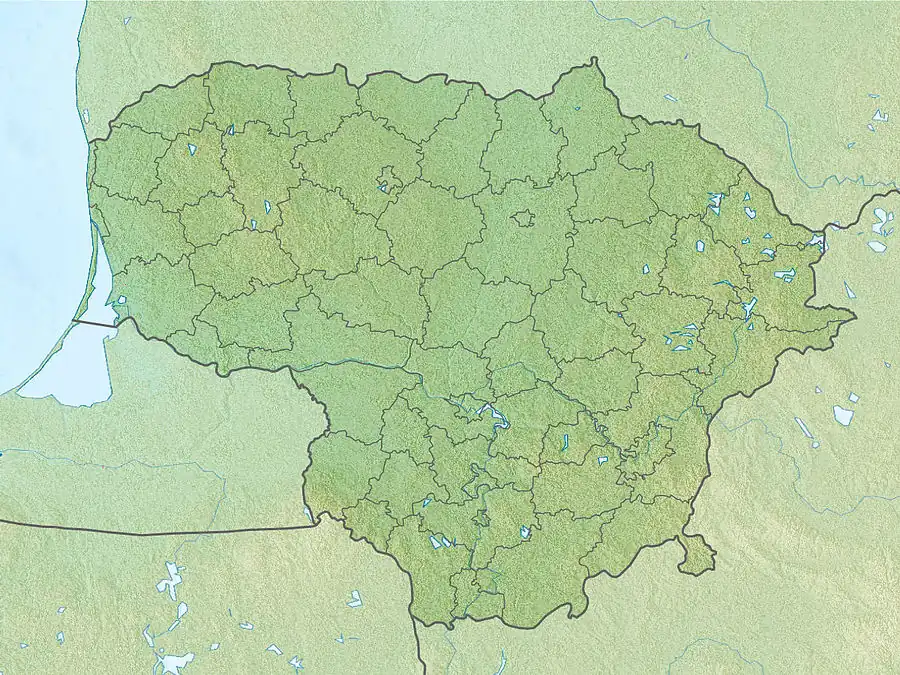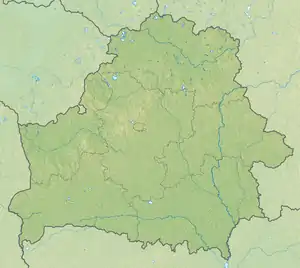Drūkšiai
Drūkšiai, also called Drysviaty or Drysvyaty,[1] or Drisvyaty (Belarusian: Дрысвяты, pronounced [drɨˈsʲvʲatɨ]; Russian: Дрисвяты) is the largest of the Braslau Lakes located partly in the northeastern part of Lithuania and partly in the Vitebsk Voblast, in Belarus. The lake water was used to cool the reactors of the Ignalina Nuclear Power Plant.
| Drūkšiai | |
|---|---|
 Lake Drūkšiai in Lithuania, at Tilžė village | |
 Drūkšiai  Drūkšiai | |
| Coordinates | 55°37′17″N 26°36′21″E |
| Primary outflows | Prorva |
| Catchment area | 613 km2 (237 sq mi) |
| Basin countries | Lithuania, Belarus |
| Surface area | 44.79 km2 (17.29 sq mi) |
| Average depth | 7.6 m (25 ft) |
| Max. depth | 33.3 m (109 ft) |
| Surface elevation | 141.6 m (465 ft) |
The greatest depth of the lake is 33.3 m, and the average depth is 7.6 m. The basin of the lake was formed during the movement of the glaciers by two perpendicular channels, which expanded north to south and west to east. The maximum depth of the first channel is 29 m, and the second one - 33.3 m. The greatest depths are located near the middle of the lake. The shallowest part is on the south ridge of the lake, its depth is approximately between 3 and 7 meters.
Six small rivers flow into the lake, and one dammed river flows out.[2]
See also
Footnotes
- "Treaty concerning the lithuanian-belarusian state frontier.Signed at Vilnius on 6 February 1995" (PDF). United Nations. Retrieved 2010-01-01.
- "ENVIRONMENTAL RELEASES OF RADIOACTIVITY AND THE INCIDENCE OF THYROID DISEASE AT THE IGNALINA NUCLEAR POWER PLANT" (PDF). Oregon State University. Retrieved 2010-01-24.
References
- Druksiai ecological tourism center Archived 2017-06-26 at the Wayback Machine
- Site name: Lake Druksiai with adjacent territories. Ecological Institute at University of Vilnius.